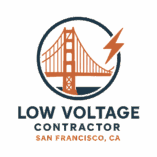Protecting San Francisco Homes: Why More Residents Are Installing Low Voltage Security Systems
Introduction
Home security has become a top priority for many San Francisco residents as crime rates fluctuate and property values continue to rise. Low voltage security systems in San Francisco are increasingly popular for their reliability, cost-efficiency, and integration with smart home technologies. These systems provide advanced monitoring, remote access, and energy-efficient solutions that protect both families and assets. In this article, we explore why more homeowners are turning to low voltage security systems, the benefits they offer, and trends shaping the future of residential security in San Francisco.
Table of Contents
- Understanding Low Voltage Security Systems
- Benefits of Low Voltage Systems for Homeowners
- 2.1 Enhanced Security and Monitoring
- 2.2 Remote Access and Smart Home Integration
- 2.3 Energy Efficiency and Cost Savings
- Popular Low Voltage Security Technologies
- 3.1 CCTV Cameras and Video Surveillance
- 3.2 Alarm Systems and Motion Sensors
- 3.3 Access Control Systems
- 3.4 Smart Home Automation
- Why San Francisco Residents Are Upgrading
- Professional Installation vs DIY Solutions
- Common Mistakes to Avoid
- Future Trends in Home Security
- Conclusion and Key Takeaways
- FAQs
- References
Understanding Low Voltage Security Systems
Low voltage security systems operate on a power supply lower than traditional household voltage, typically under 50 volts. These systems are designed for safety, efficiency, and flexibility. Unlike conventional high-voltage systems, low voltage setups can power cameras, alarms, access controls, and smart devices through a centralized network without extensive rewiring or risk of electrical hazards.
San Francisco homes benefit from low voltage solutions due to the dense urban layout, which allows for integrated security networks that cover multiple entry points, common areas, and external perimeters. These systems also easily adapt to modern smart home ecosystems.
Benefits of Low Voltage Systems for Homeowners
2.1 Enhanced Security and Monitoring
Low voltage systems provide real-time monitoring through high-definition CCTV cameras, alarms, and motion sensors. Homeowners can track activity on mobile apps, receive instant notifications, and record incidents for legal or insurance purposes.
2.2 Remote Access and Smart Home Integration
Modern low voltage systems integrate seamlessly with smart home platforms. Residents can control lighting, locks, and cameras remotely. For example, using smartphones or voice assistants, homeowners can manage access and monitor activity even when traveling, enhancing convenience and peace of mind.
2.3 Energy Efficiency and Cost Savings
These systems consume significantly less power than traditional high-voltage alternatives. By leveraging PoE (Power over Ethernet) and other low voltage technologies, homes reduce electricity costs while maintaining continuous protection. Additionally, minimal wiring reduces installation costs and disruption to the property.
Popular Low Voltage Security Technologies
3.1 CCTV Cameras and Video Surveillance
High-definition security camera systems with night vision and motion detection capabilities are central to modern security solutions. They allow for 24/7 monitoring, automated alerts, and cloud-based storage for incident review.
3.2 Alarm Systems and Motion Sensors
Integrated alarm systems detect unauthorized entries or unusual activity. Advanced sensors can differentiate between pets, humans, and objects, minimizing false alarms while providing robust security coverage.
3.3 Access Control Systems
Low voltage access control allows residents to manage entry points using keycards, biometric readers, or mobile apps. This ensures secure access to the property without relying solely on physical keys.
3.4 Smart Home Automation
Integration with smart home devices, such as smart locks, lighting, and environmental sensors, allows for automated routines. For example, doors can lock automatically at night, or lights can trigger when motion is detected, enhancing both security and energy efficiency.
Why San Francisco Residents Are Upgrading
Several factors drive the adoption of low voltage security systems in San Francisco:
- Urban density: Multi-unit buildings require integrated, centralized monitoring.
- Property value protection: Residents invest in security to safeguard high-value assets.
- Tech-savvy population: Many homeowners prefer smart home integration for convenience and control.
- Insurance incentives: Some insurers offer lower premiums for homes with modern security systems.
Professional Installation vs DIY Solutions
While DIY systems are available, professional installation ensures proper configuration, compliance with local codes, and optimized placement of devices. Professionals can integrate multiple technologies, troubleshoot network issues, and provide maintenance services, ensuring the system’s reliability and longevity.
Common Mistakes to Avoid
- Improper device placement: Blind spots reduce effectiveness.
- Neglecting network security: Connected systems require encryption and secure passwords.
- Overlooking maintenance: Batteries, firmware updates, and camera lenses must be maintained.
- Choosing cheap equipment: Low-quality devices often fail, negating the benefits of low voltage systems.
Future Trends in Home Security
- AI-Powered Monitoring: Motion recognition, anomaly detection, and facial recognition will enhance automated alerts.
- Cloud Integration: More homeowners will rely on cloud storage for real-time monitoring and data backup.
- IoT Expansion: Increased integration with smart home appliances will provide holistic property management.
- Sustainable Security: Energy-efficient designs and renewable-powered devices will become standard.
Conclusion
Low voltage security systems are transforming how San Francisco residents protect their homes. By offering high-tech monitoring, smart home integration, and energy-efficient solutions, and improved productivity with structured cabling these systems provide peace of mind and convenience. Investing in professional installation ensures reliable operation and long-term safety for families and assets.
FAQs
Q1: What is a low voltage security system?
A: A system operating on less than 50 volts, powering cameras, alarms, and smart home devices safely and efficiently.
Q2: Are low voltage systems suitable for apartments?
A: Yes, they are ideal for multi-unit buildings and shared spaces, offering centralized monitoring and control.
Q3: Can I install a system myself?
A: DIY options exist, but professional installation ensures proper integration and compliance with safety codes.
Q4: How does PoE benefit low voltage systems?
A: Power over Ethernet delivers both power and data through a single cable, simplifying installation and reducing energy consumption.
Q5: Will these systems increase my home insurance rates?
A: Typically, they can reduce premiums as insurers recognize the added protection.
